Exploration of the industrialization of a grass
Juncao is perhaps the most famous grass in the world.
Since the 80s of the 20th century, Lin Zhanxi, chief scientist of the National Juncao Engineering Technology Research Center, has screened dozens of Juncao species from wild and artificially cultivated herbaceous plants, realized the cultivation of edible fungi with "grass instead of wood", and overcame the world problem of "fungi forest contradiction". Over the past 40 years, Juncao technology has traveled from Fujian to the whole country and sailed internationally.
However, this well-known grass always seems to carry the label of "public welfare" -- it is recognized as a "poverty alleviation grass" and "ecological grass", but it is difficult to achieve industrialization; it relies on "blood transfusion" to maintain it, and it is difficult for it to walk independently by "hematopoiesis". In fact, Juncao is a grass full of imagination. It can not only grow mushrooms, raise livestock, and control soil erosion, but also be developed into man-made panels for use in the field of microorganisms. However, in order to connect these specific application scenarios into a complete industrial chain, it is necessary to overcome blockages.
Feeling this, Fujian's local enterprises and Lin Zhanxi's team came together, united the strength of surgical enterprises in the province, gathered innovative efforts, broke through the blockages step by step, and carried out an in-depth exploration of the industrialization of a grass.
01 encountered a problem
On February 27, 2021, the first day after the Lantern Festival, Lu Maosheng, chief engineer of Zhongfu Strait (Pingtan) Development Co., Ltd. (hereinafter referred to as "Zhongfu Group"), came to the wood-based panel production workshop in Longyan City early. He wants to organize a feasibility trial to see if Juncao can replace wood in the production of MDF. To this end, the company purchased more than a dozen tons of Juncao from Henan and stopped the original production plan. The economic loss of a one-day downtime on the production line is considerable.
Lu Maosheng, who is over the age of old, is the earliest practitioner in the field of fiberboard manufacturing in China. As for whether he can produce wood-based panels with "grass instead of wood", he has no bottom in his heart. In the 90s of the 20th century, Lu Maosheng tried to make boards from herbal materials such as reeds and cotton stalks, but the results were either too high in cost or too poor in performance. The production of grass boards was tested again, which came from the insistence of Liu Pingshan, chairman of the company.
A few years ago, Liu Pingshan got acquainted with Lin Zhanxi, the inventor of Juncao technology, and followed him to Juncao bases at home and abroad.
In Xihaigu, Ningxia, which is "bitter and barren in the world", in Alxa Left Banner in Inner Mongolia, which is known as the "nose of the king of Hades", in Pingtan Island in Fujian, where "eighteen villages were buried in sand in one night", and in Papua New Guinea, a backward Pacific island country...... Liu Pingshan appreciated the charm of Juncao and also felt the responsibility of a scientist.
"What else can Juncao do?"
Lin Zhanxi said that Juncao has high yield, strong adaptability, barrenness resistance, and significant ecological effects, and can be used as feed to produce wood-based panels and pulp. In Yunnan, the annual yield per mu can reach 50 tons. Planting 10,000 mu of Juncao can reduce carbon dioxide emissions by 20,000 tons per year, which is equivalent to afforestation of 7,500 mu. For every 250,000 tons of Juncao used to replace wood raw materials, 10,000 acres of forest land can be reduced.
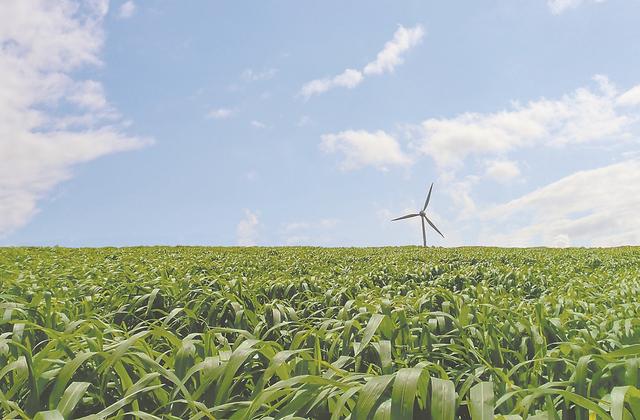
Juncao planting base in Jian'ou City covers an area of 300 acres. (Photo provided by the interviewee)
"What are the difficulties in the development of Juncao?"
Lin Zhanxi said: The difficulty lies in industrialization. Only when Juncao is used can Juncao be planted in a profitable way, and only then will people be willing to plant Juncao. However, the cost of a wood-based panel production line is generally more than 100 million yuan, and a pulp production line is invested more.
Lin Zhanxi's words moved Liu Pingshan and made him see the new prospects of the industry.
Zhongfu Group is a leading enterprise with forestry as its main business, operating nearly 900,000 acres of forest area, and its four medium and high-density fiberboard production lines can have an annual production capacity of more than 500,000 cubic meters. In recent years, due to the limitations of topography and landforms, coupled with the high cost of rural labor, the cost of forest harvesting has remained high. At the same time, there is a seasonal shortage of wood raw materials. In the context of "dual carbon", reducing forest felling is also the general trend. Finding new materials that can replace wood resources has become an industry-wide consensus. Renewable, stable supply of Juncao is an ideal alternative.
However, when Liu Pingshan found experts in the industry and proposed the idea of "replacing wood with grass", he was poured a basin of cold water. A university professor directly advised him to give up: "One woody and one herb is like a chicken can't become a duck." But Liu Pingshan was not deterred, he believes that he can't stand at the foot of the mountain and say that there is no scenery on the top of the mountain, "why don't you do a few more experiments, climb a few steps up the mountain, maybe you can see different scenery."
So, Liu Pingshan found the company's technical backbone and began to "march from the foot of the mountain to the mountain". That's when the work was stopped for experiments.
Cutting, cooking, defiberization, sizing, drying, paving, sweeping, pre-pressing, hot pressing...... During the experiment, according to the differences in the characteristics of herbaceous plants and woody plants, Lu Maosheng's team continuously adjusted the process through trial and error, and carried out 6 feasibility tests within 3 months. At first, we only made whole grass fiberboard, and later tried to add Juncao fiber in proportion to the wood raw materials. The results were surprising: "grass instead of wood" is feasible, Juncao fiberboard has its own grass fragrance, uniform board quality, and has better processing performance than pure wood board.
However, this only answers the question of "whether it can be", and has not completely solved the problem of industrialization. As the experiment progresses, new problems arise - in the upstream, the high cost of raw materials is due to the difficulty of harvesting, transportation, and storage of Juncao.
"Traditional harvesting methods rely on manual labor, and a skilled worker can only harvest up to 1 ton of grass a day, which is a lot of labor costs. Lv Xiangxi, deputy general manager of Zhongfu Group, said that a fiberboard production line can consume hundreds of tons of Juncao raw materials every day, and manual harvesting alone cannot ensure the supply of raw materials. In addition, Juncao is large in size, often growing to three or four meters, and a 10-ton truck can only hold 5 tons of grass. Juncao is not resistant to storage, and it will mildew after 3 days of use.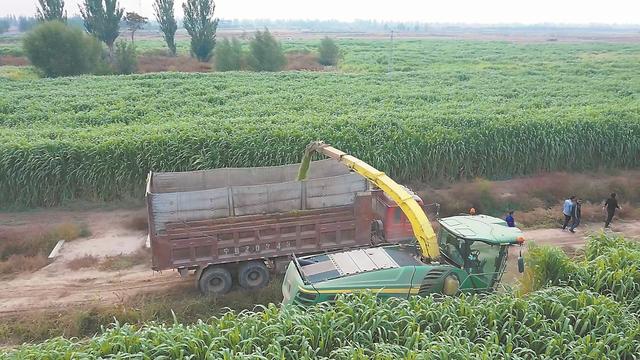
Juncao is harvested mechanically. (Photo provided by the interviewee)
Downstream, Juncao waste liquid treatment costs are extremely high.
The water content of Juncao is as high as 70 or 80 percent, which is much higher than that of wood, and does not meet the processing standards of man-made panels. If the board is processed, the excess water must be squeezed out first. To this end, the team has developed a special juicer with independent intellectual property rights, which can reduce its moisture content to less than 50%, which is comparable to wood. However, each ton of Juncao can squeeze hundreds of catties of Juncao juice. If it is processed to the emission standard, the cost per ton will be around 1,000 yuan, which is obviously not worth it.
"If the cost cannot be reduced, industrialization is equivalent to empty talk. "Liu Pingshan encountered the biggest problem after entering the Juncao field.
02 Overcome difficulties
The massive amount of Juncao juice is a headache, but it is a "clear stream" in industrial wastewater, with a pleasant fragrance. Liu Pingshan had a whim: If we can turn waste into treasure, won't the problem be solved? What use can Juncao juice have? He found foreign aid and sent Juncao juice to the laboratory of Liu Bo, a researcher at the Fujian Academy of Agricultural Sciences.
Liu Bo is an expert in the field of agricultural microorganisms, and his research and development of microbial agent products has been popularized and applied to more than 10 million acres. But for Liu Bo, Juncao juice is also a strange thing. Liu Bo is full of curiosity about this plant with outstanding biomass.
He found that the stems of Juncao contain more than 700 kinds of endophytes, of which a nitrogen-fixing bacterium called Delfordella therapeutica accounts for more than 80%, which can continuously convert nitrogen in the air into nitrogen fertilizer to supply nutrients to plants, and the roots contain more than 600 kinds of endophytes, of which the biocontrol bacterium Weiss sinus eatens accounts for more than 90%, which has the ability to prevent and control root diseases such as wilt. It can not only be "self-produced and self-sold", but also "invasive", which to some extent explains why Juncao has a growth ability that is difficult to match with other crops.
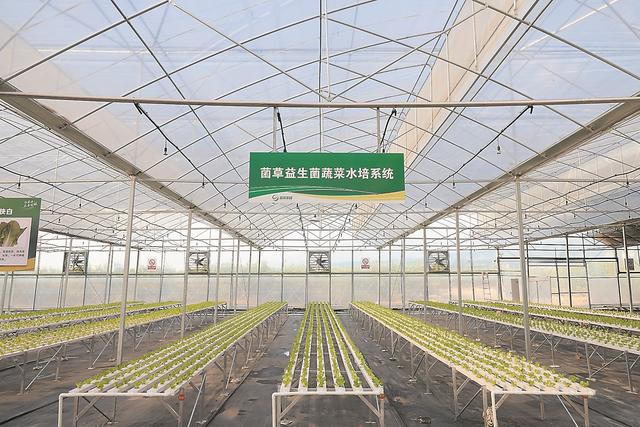
Juncao Probiotic Vegetable Hydroponic System (Photo provided by the interviewee)
Bigger surprises are yet to come. With the mentality of giving it a try, Liu Bo's team analyzed the components of Juncao juice and found that it contained 12 categories of beneficial substances such as terpenes, ketones, esters, and aldehydes. Each of these substances has its own magical powers, some have anti-inflammatory and antioxidant effects, and some are natural active substances with excellent decontamination and deodorization capabilities.
"Isn't this a natural microbial culture medium?" Liu Bo said, to batch propagation of yeast, bacillus, lactic acid bacteria and other microorganisms needed for production, it is inseparable from the culture medium. Different from the artificially configured medium "one bacteria and one formula", Juncao juice can be described as a "universal medium", which can efficiently cultivate different kinds of microorganisms without adding additional raw materials, "it is simply God's formula".
Knowing oneself and knowing one's opponent opens up the way of thinking. Through the research and development of Liu Bo's team, Juncao juice can be used to the fullest: using Juncao juice as the culture medium, inoculating a variety of human probiotics, the developed probiotic drink has the health effect of regulating the ecological balance of the human body; Juncao juice essence extracted by molecular sieve technology can be used as a natural and powerful detergent at home, pet deodorant, air freshener, and fish tank water purification agent; as an agricultural fungus agent, Juncao juice can be used in livestock and poultry breeding, aquaculture, In the fields of fruit and vegetable cultivation, improve the ecology of soil and water bodies, decompose manure, improve the immunity of livestock, poultry, fish and shrimp, and help ecological planting and breeding......
In the past, wastewater not only has a place to go, but also multiplied in value. According to the current market, the deep-processed Juncao juice is very marketable. This has also become the biggest turning point in the industrial utilization of Juncao.
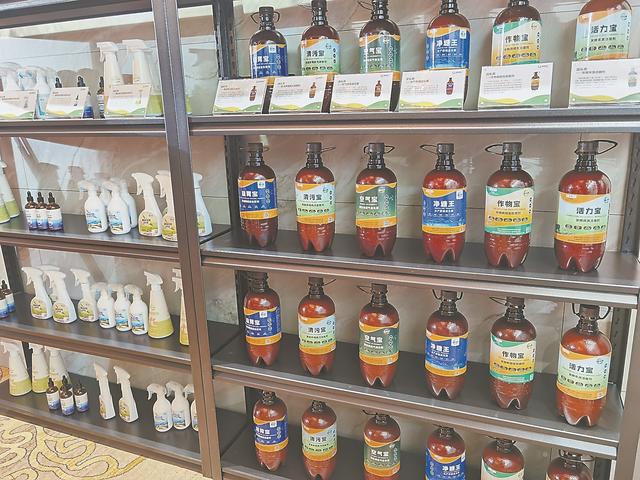
Juncao juice products (photo provided by the interviewee)
The application of Juncao juice has broken the problem and opened up the downstream blocking points. What should we do about the problems of upstream harvesting, transportation, and storage? Mechanization is the way out.
"Juncao is coarse and hard, and it is difficult to apply the general-purpose harvesting tools used for corn, sugarcane and other crops on the market. Lv Xiangxi said that to achieve the mechanized harvesting of Juncao, we can only "go from 0 to 1" and take the road of independent research and development. This time, the foreign aid they found was the team of surgical enterprises in the province such as Fujian Academy of Forestry and China Shipbuilding Heavy Industry. After several years of research, a number of different types of applicable machinery have begun to take shape.
Large-scale harvester, with the function of leaf stripping and tip removal, can realize Juncao whole stalk harvesting, with an hourly operation of 5 mu, 5 tons per mu; medium-sized green storage harvester, which can be crushed on the spot at the same time of harvesting, eliminating the slicing process when processing plates, and the crushed Juncao can also be packaged into silage for livestock and poultry breeding; small crawler and walk-behind harvester are good tools for small farmers...... In addition to harvesters, Zhongfu Group has also participated in the research and development of special tools such as rotary cultivators, cuttings, trenchers, crushers, mixers, etc., and gradually realized the whole process of mechanized production of Juncao.
When the blocking points are dredged, the industrial chain will be opened.
Lu Maosheng calculated an account: the purchase price of 1 ton of Juncao in the field is hundreds of yuan, and 5 tons of Juncao can squeeze about 1 ton of Juncao juice. If it is regarded as industrial wastewater, the treatment cost of 1 ton of Juncao juice is not low, and if it is further processed to "turn waste into treasure", the cost of Juncao as a raw material for wood-based panels will be halved, close to the cost of wood. This means that the production of wood-based panels from grass instead of wood is not only technically feasible, but also economically cost-effective.
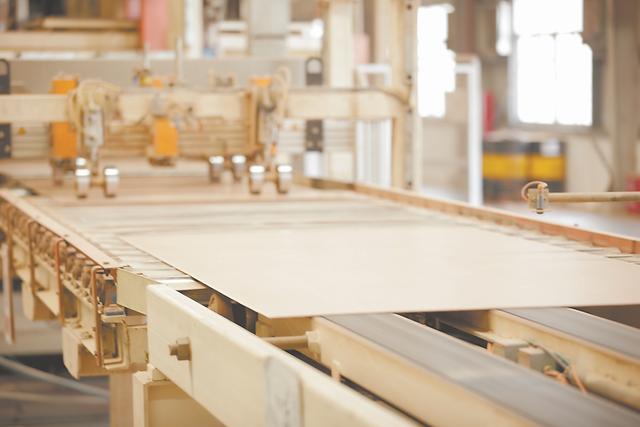
The country's first "grass instead of wood" board production line was put into operation in Jian'ou City.
With the problem solved, the industrialization process of Juncao wood-based panels has accelerated.
In December 2022, Zhongfu Group's first Juncao fiberboard production line was put into operation in Jian'ou City. At the same time, the company also applies Juncao to the production of particleboard. At present, Juncao fiberboard and Juncao particleboard have passed the strict testing of the "National Quality Supervision and Testing Center for Wood-based Panels and Wood Products", and their mechanical and environmental performance meet the national standards. Both Juncao boards and their preparation methods have obtained national invention patents.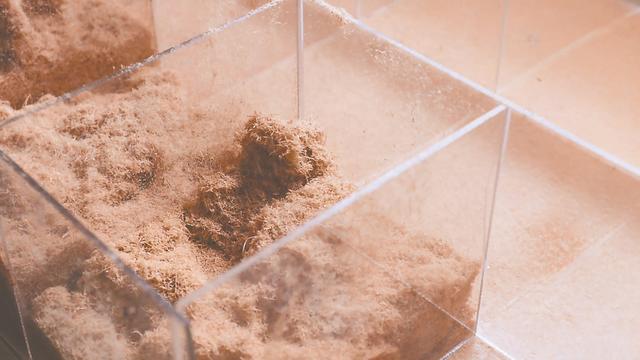
Juncao board fiber (photo provided by the interviewee)
At present, Zhongfu Group is actively investing in Juncao technology, and the company cooperates with the local agricultural reclamation group in Yunnan to use 20,000 acres of rubber forest to interplant Juncao and build the world's first Juncao particleboard production line with an annual output of 300,000 cubic meters in Mengla Industrial Park, Xishuangbanna. Last month, the project officially began.
03Plan for a new future
Juncao, which has opened up the upstream and downstream blockages, has begun to gallop on the road of industrialization, but its original intention as a "happy grass" has not changed. Liu Pingshan has been thinking about a question: how to let more farmers find their own positions at different nodes of the Juncao industry chain, and let more farmers share the benefits brought by the value-added of the Juncao industry chain through joint agriculture and agriculture?
"Juncao Home" is an important carrier for the implementation of this concept. The so-called "Juncao Homeland" is actually a circular agricultural complex with Juncao as the origin. Here, every aspect of agricultural production revolves around Juncao. In 2021, the "Juncao Home" in Boai Village, Daheng Town, Yanping District, Nanping City, is the first demonstration project. This base, which covers an area of more than 400 acres, has 8 staff members. They have their own exclusive nicknames - "King of Cows", "King of Goose", "King of Sheep" and "Marshal of Tianpeng", and are responsible for different livestock and aquaculture products, but they all have to deal with grass.
"In northern Fujian, the annual output of one mu of Juncao is about 12 tons. Zhang Lei, the person in charge of Daheng's Juncao Home, said that Juncao can be harvested in two months, and after being crushed on the spot through mechanical harvesting, part of it is transported to wood-based panel factories, and part of it is used for agricultural planting.
Taking goat breeding as an example, on the one hand, Juncao can be used as feed, and a goat needs to eat five or six catties of Juncao and more than one catty of concentrate feed every day. On the other hand, Juncao can also be used as a fermented mattress material, providing a "hotbed" for goats and decomposing manure on the spot.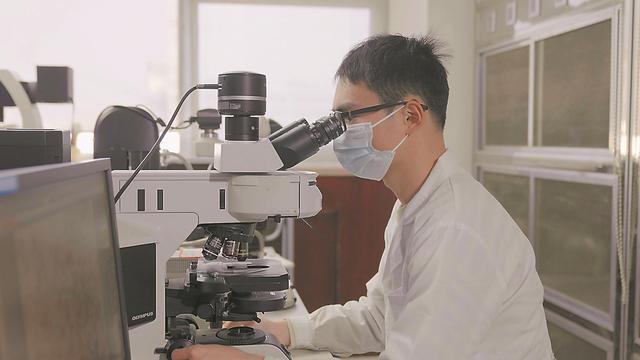
The Provincial Academy of Agricultural Sciences and Zhongfu Group have cooperated to establish the Juncao Key Laboratory of Microbiology, and researchers are observing microbial reactions. (Photo provided by the interviewee)
"We use Juncao to lay out a bedding layer about 50 centimeters thick, sprinkle it with special fungi, and the goats eat and drink on the fermentation bed. Zhang Lei said that the fermentation process produces a large number of beneficial bacteria, which can quickly decompose goat manure, and goats can also supplement beneficial bacteria by eating bedding, improve the balance of intestinal flora, and improve their own immunity, so as to achieve "odorless breeding" and "antibiotic-free breeding". "Sheep King" no longer has to worry about dealing with manure, as long as the rotary tiller is used regularly to plough the bedding layer and supplement the Juncao bedding as appropriate. The fermented mattress material only needs to be changed once a year. The eliminated bedding is a good thing, rich in nitrogen, cellulose and other nutrients, which can be used as high-quality organic fertilizer and as a substrate for cultivating edible fungi.
In the "Juncao Homeland", whether it is raising sheep, pigs, cattle or geese, they all follow this circular breeding model. In the future, Zhang Lei will also introduce parent-child paradise, Juncao family banquet, research and training and other agricultural and tourism integration formats. A small Juncao plant connects the closed loop of the integration of primary, secondary and tertiary productions. In this closed loop, there is no waste in the real sense, and every raw material can be "eaten and squeezed" and used more than once, so as to achieve cost saving and efficiency increase in production.
At present, the "Juncao Homeland" model has been implemented in demonstration projects in Nanping, Fuzhou and Xishuangbanna, Yunnan. According to Zhongfu Group's plan, the model will be promoted on a larger scale in the future to guide more smallholder farmers to participate.
"Fujian has a lot of people and little land, and Juncao cultivation is facing land problems. Lv Xiangxi said that in order to expand the source of raw materials, the company on the one hand to develop bases outside the province to promote large-scale operation, on the other hand, the integration of small farmers, encourage them to participate in the "Juncao homeland" operation, to provide them with seeds, strains, machinery, technology and other services, standardize the production process and product standards, in the realization of the stable supply of Juncao board raw materials at the same time, drive small farmers to develop ecological recycling agriculture to increase income and get rich.
At present, the exploration of Juncao industrialization continues.
"It seems to be an ordinary grass, but its industrial chain is very long, involving a wide range of industries and categories, and it is difficult for a single enterprise, a single institute and a single industry to independently complete technical research. Liu Pingshan believes that the key to the industrialization of Juncao lies in aggregating the strength of science and technology enterprises, and gradually breaking the problem and breaking the situation in the "big division of labor, big cooperation, and big operation". This kind of collaboration is continuing to advance in depth.
Last month, the Juncao Key Laboratory of Microbiology jointly built by the Provincial Academy of Agricultural Sciences and Zhongfu Group was inaugurated. Last year, the two sides also cooperated to build the province's first Juncao Microbial Agricultural Industry Research Institute.
"Through the cooperation of science and technology, we will jointly carry out research on the collection of Juncao germplasm resources and the breeding of new varieties, the green, low-carbon and efficient cultivation of Juncao, the mechanized harvesting of Juncao, the collection and utilization of Juncao microbial germplasm resources, and the high-value utilization of Juncao. Wang Jieping, a researcher at the Institute of Resources, Environment and Soil and Fertilizer of the Provincial Academy of Agricultural Sciences, said that the two sides are making every effort to build a scientific and technological innovation and service platform integrating applied basic research, equipment creation, product research and development, achievement transformation, technical services and talent training. "Engaging in scientific research and innovation is bitter first and then sweet, and the bitter time is short, and the sweet time is long; the enterprise that makes quick money is sweet first and then bitter, and the sweet time is short, and the bitter time is long. Liu Pingshan believes that the future of the Juncao industry lies in innovation, "without innovation, there is no future".







